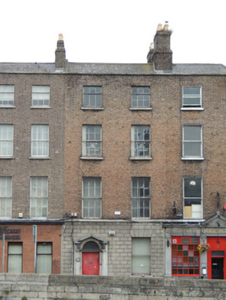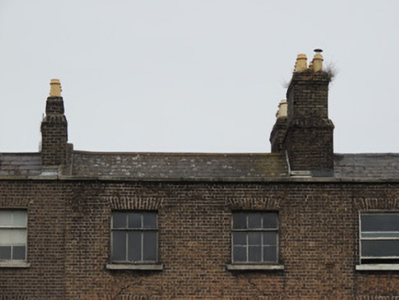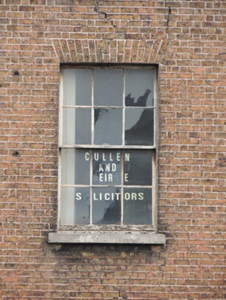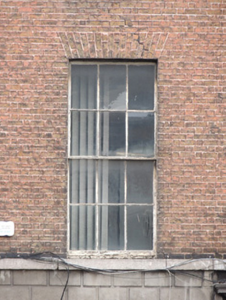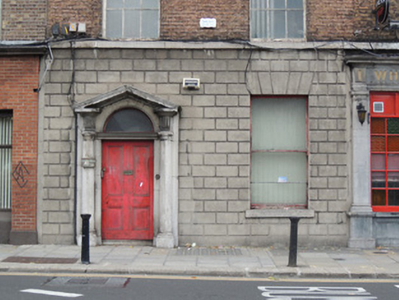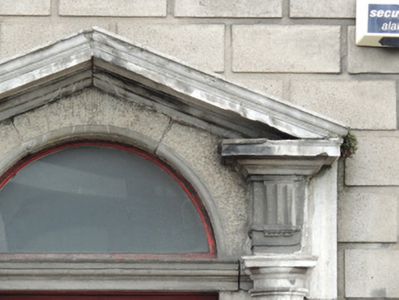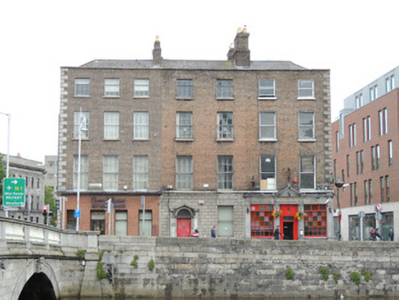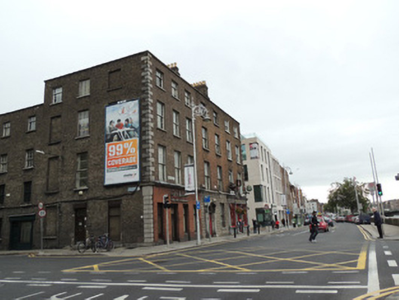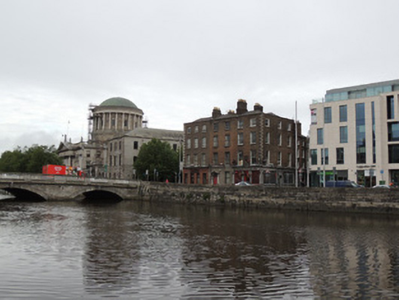Survey Data
Reg No
50070277
Rating
Regional
Categories of Special Interest
Architectural
Previous Name
Cullen & O'Beirne Solicitors
Original Use
House
In Use As
Office
Date
1760 - 1800
Coordinates
315134, 234196
Date Recorded
01/10/2012
Date Updated
--/--/--
Description
Terraced two-bay four-storey former house, built c.1780, now in use as offices. M-profile pitched slate roof with stone ridge tiles, shared with No.1 to west and No.3 to east. Brown brick chimneystacks on party walls with replacement terracotta chimneypots. Brown brick walls laid in Flemish bond, with rusticated cement rendered walls to ground floor. Square-headed window openings, with three-over-six pane timber sash windows to third floor, six-over-six pane timber sash windows to first and second floors, and one-over-one pane timber sash window to ground floor. Cut granite continuous sill course to first floor, cut granite sills to other windows. Cut and carved limestone doorcase of engaged Doric columns supporting open pediment and containing plain fanlight over timber panelled door. Concrete paving to footpath with granite kerbstones.
Appraisal
No.2 Inns Quay forms part of a terrace of three late eighteenth-century former houses facing south to the River Liffey. It retains its elegant late eighteenth-century proportions and contains early timber sash windows and granite kerbstones to the south. The textured render to the ground floor emulates the cut stone façades of fashionable buildings, and appears to be a twentieth-century alteration, while the doorcase is an example of the skilled stone masonry that inspired it. King's Inns Quay is sited on Rocque's map of 1756, taking its name from the King's Inns which occupied the site since its foundation in 1561. The buildings lining the quay were redeveloped at the turn of the nineteenth century with the construction of the Four Courts (built c.1802). The quay was renamed Inns Quay in the mid twentieth century. Directly neighbouring the Four Courts, No.2 Inns Quay was occupied by solicitors' offices throughout the nineteenth and twentieth centuries.

